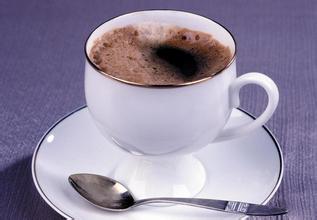Coffee Roasting Knowledge Introduction Coffee Roasting Introduction Tips Coffee Roasting Knowledge Introduction
Cities all over the world have their preferred baking tendency.
In Tokyo, micro-deep medium baking is more popular, but slowly it also tends to deep baking. As for Kansai, deep baking has been popular in the past.
New York, as its name suggests, generally prefers urban baking, but because the city is inhabited by different races of people, it also sells coffee beans with different roasting degrees, and the variety is also quite rich.
Vienna prefers deep baking. Even as the name suggests, the French prefer French baking, while Italians often use Italian baking.
However, in recent years, Italian baking (the most commonly used deep roasting in Brazil and Italy) has been widely used in Europe and the United States, and the coffee made by steam pressurizer is still popular.
Deep roasting of Ethiopian coffee beans would be a waste. Because that would lose the unique characteristics of this coffee. Black roasting of Yauco and Kona coffee beans is also bad, because you will lose the classical flavor you pursue when you buy it.
When some coffee beans are roasted black, new and interesting qualities will be derived. Mexican coffee beans produce an interesting sweetness when roasted in black.
Guatemala Antigua coffee beans seem to retain their sour and fruity flavor when they are deeply roasted, which is difficult for other coffees.
Sumatran coffee beans are usually full-grained, but are below medium acidity, lose acidity when roasted deeper, and easily turn into sugar paste.
Generally speaking, the darker the baking, the lower the quality. Deeper roasting means that most of the flavor roasting of lost coffee beans is roughly divided into light roasting (Light), medium roasting (Medium), urban roasting (City) and deep roasting (Deep). Light roasted coffee beans: will have a strong smell, very crisp, high acidity is the main flavor and slightly mellow. Medium-roasted coffee beans: have a strong mellow, but also retain a certain degree of acidity. City-baked coffee beans: the surface is dark brown, the acidity is replaced by slight bitterness, and most of the flavor has been destroyed. Deep-roasted coffee beans: dark brown in color and oily on the surface. For most coffee beans, the alcohol content increases significantly and the acidity decreases. In fact, roasting coffee is a way of processing food. The roasting of professional coffee is the personal expression of the roaster. Just started to contact with professional coffee.
Coffee beans with different roasting degrees
Coffee beans with different roasting degrees
(SPCIAITYCOFFEE) the biggest problem is the name of the degree of baking. For example, CITY, FULLCITY, FRENCH, ESPRESSO, etc., all produce different baking colors because of the different baking machines and producing areas. In addition, some roasting levels are named after mixed coffee: for example, ESPRESSO is a coffee with a specific roasting degree for making ESPRESSO, and even if the color looks the same, it may have a completely different flavor. Therefore, the selection of the type of beans, baking temperature and baking method, and the length of baking time are the main factors that determine the final flavor.

Important Notice :
前街咖啡 FrontStreet Coffee has moved to new addredd:
FrontStreet Coffee Address: 315,Donghua East Road,GuangZhou
Tel:020 38364473
- Prev

Introduction of Coffee planting methods introduction of Coffee planting conditions
The first flowering period of the coffee tree is about three years old. the white five-petal tube-shaped flowers are filled with a faint scent of jasmine and the inflorescences are arranged in dense clusters. Flowers wither after two or three days of blooming and begin to bear fruit after a few months. The fruit is a drupe with a diameter of about 1.5 cm, which is green at first, then turns yellow gradually, and turns red after ripening, which is very similar to cherries.
- Next

Introduction to the treatment of Coffee Raw Bean by Coffee Refining
The origin of the red wine treatment method comes from its treatment process, and the red wine flavor treatment method is named because of its full alcohol thickness, red wine fermentation flavor, low acidity and excellent sweetness. (The result is a more full-bodied, slightly winey, sweeter coffee with less acidity.) so where is the red wine flavor treatment?
Related
- Beginners will see the "Coffee pull flower" guide!
- What is the difference between ice blog purified milk and ordinary milk coffee?
- Why is the Philippines the largest producer of crops in Liberia?
- For coffee extraction, should the fine powder be retained?
- How does extracted espresso fill pressed powder? How much strength does it take to press the powder?
- How to make jasmine cold extract coffee? Is the jasmine + latte good?
- Will this little toy really make the coffee taste better? How does Lily Drip affect coffee extraction?
- Will the action of slapping the filter cup also affect coffee extraction?
- What's the difference between powder-to-water ratio and powder-to-liquid ratio?
- What is the Ethiopian local species? What does it have to do with Heirloom native species?

